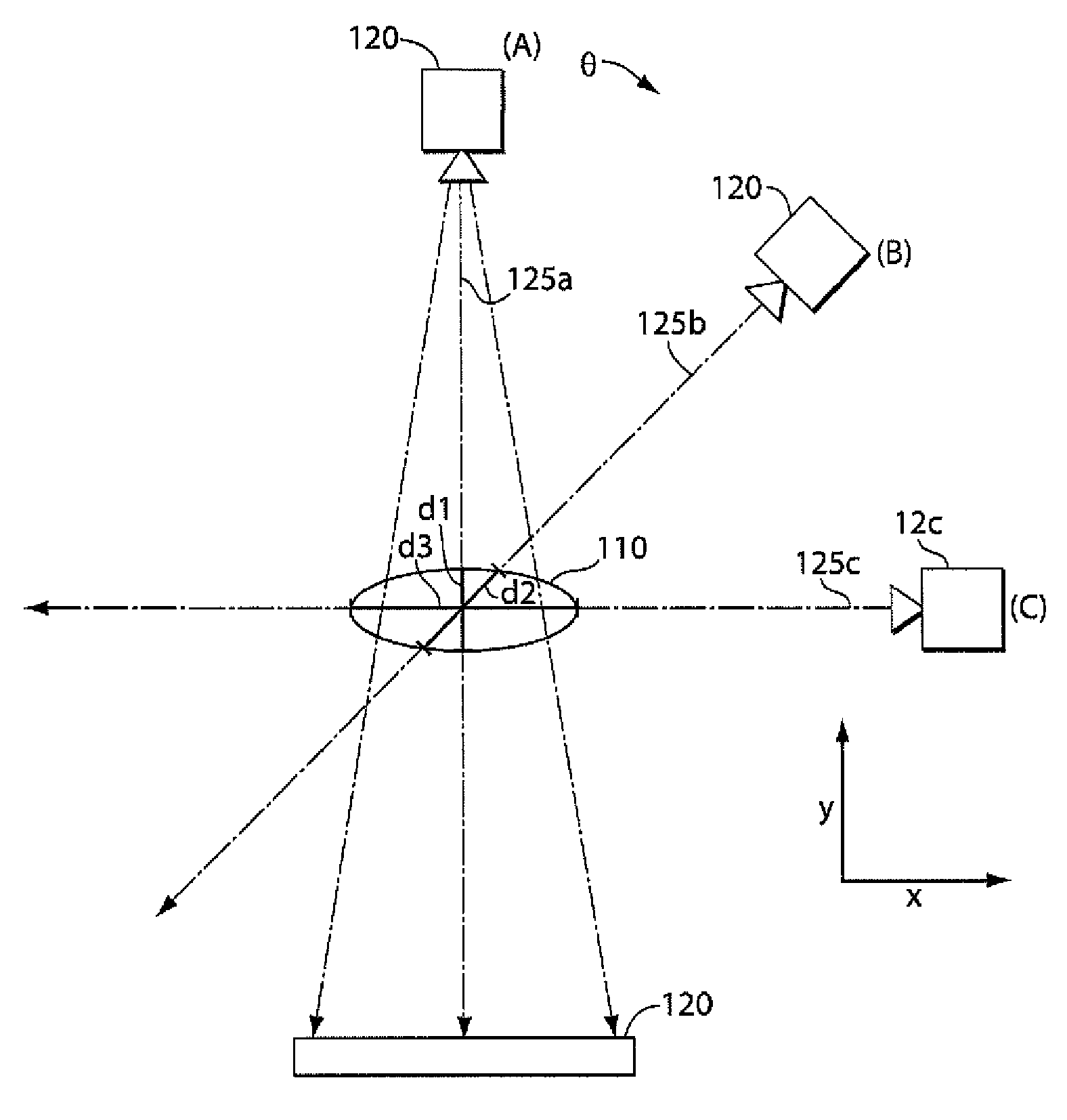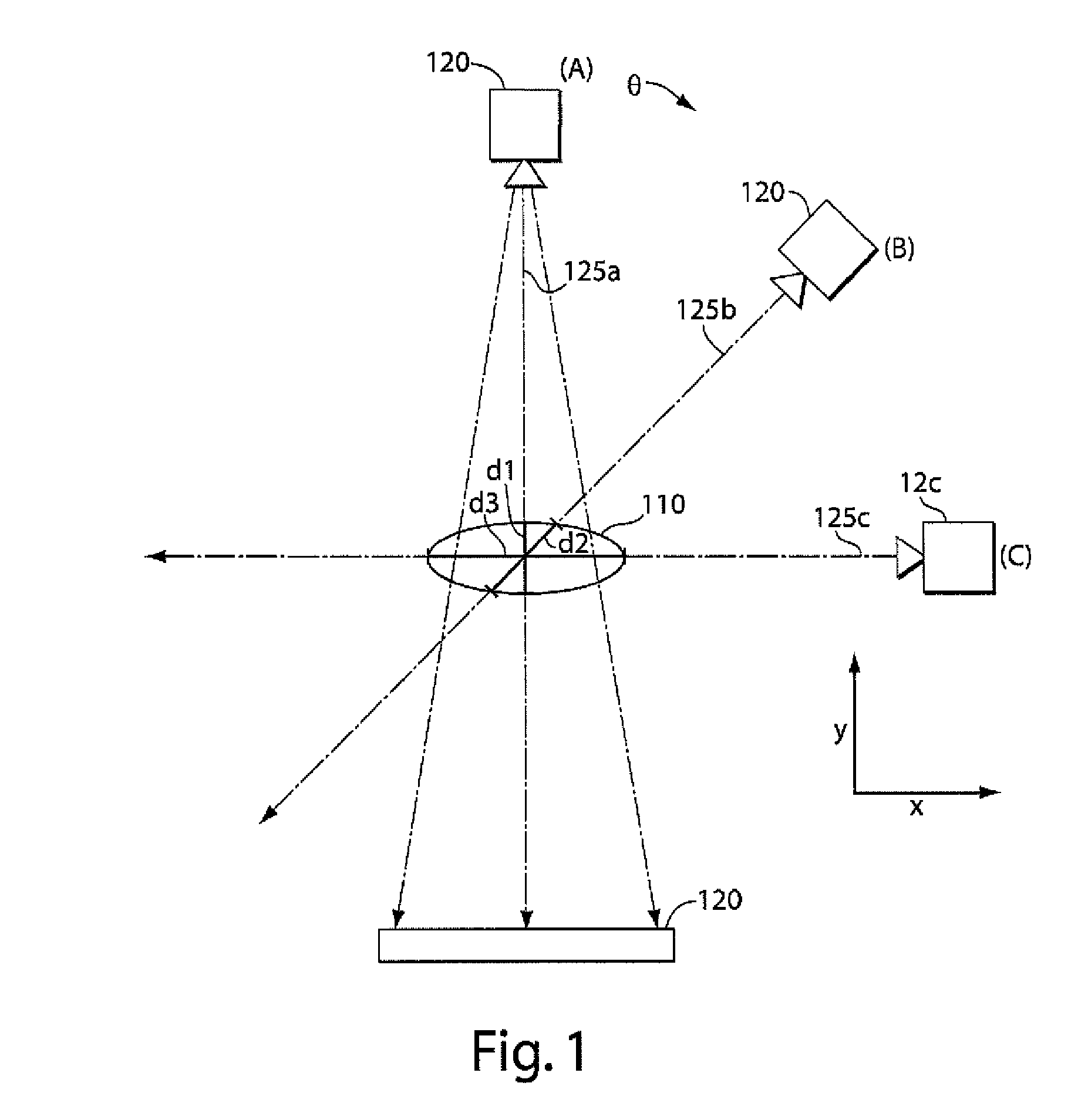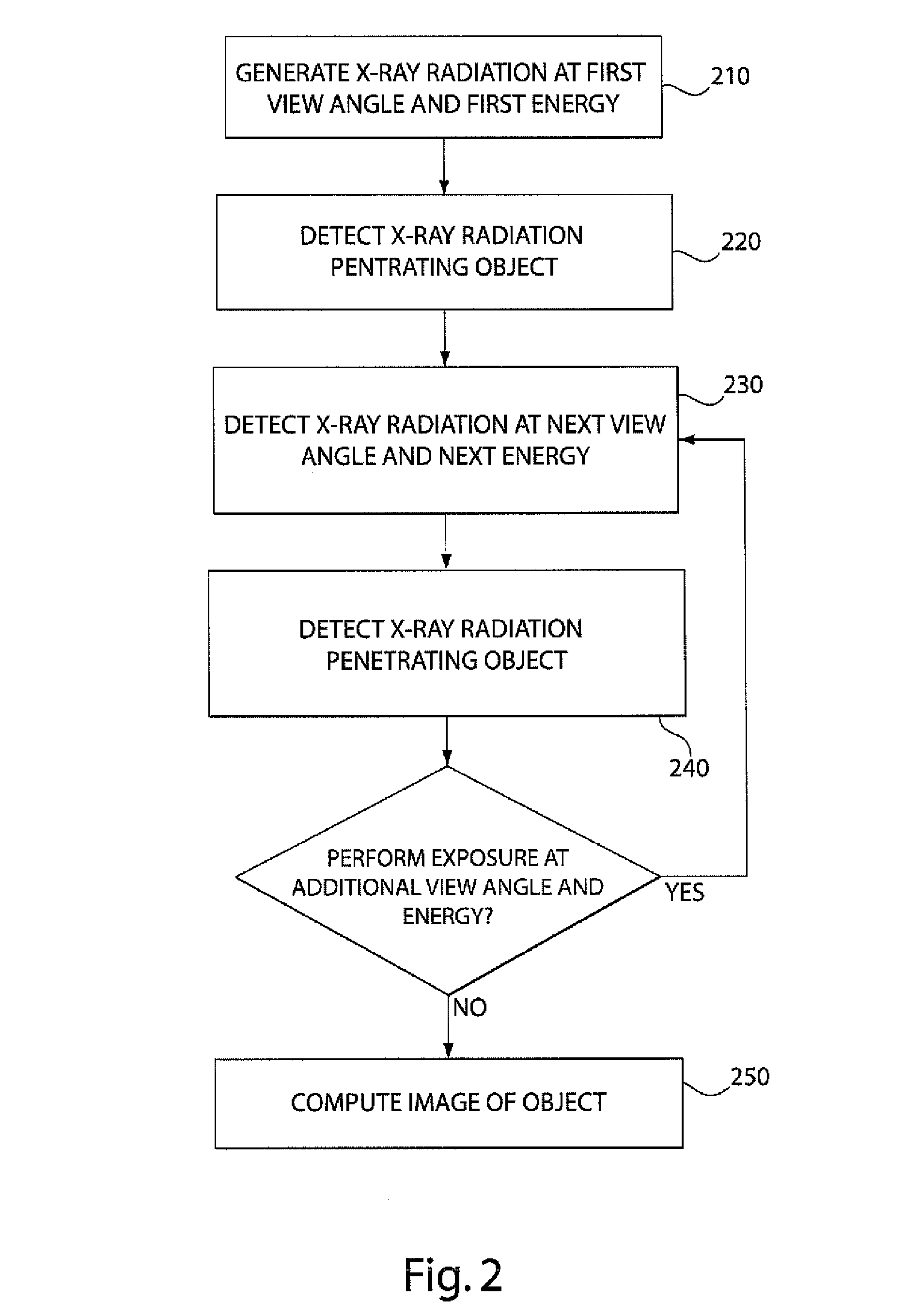Methods and apparatus for obtaining low-dose imaging
a low-dose, imaging technology, applied in the field of radiation imaging, can solve the problems of requiring the object to be exposed to relatively large doses of x-ray radiation and/or over applications with particular safety and/or time constraints, obscuring the true nature of the structure, and difficult to identify or detect tissue anomalies
- Summary
- Abstract
- Description
- Claims
- Application Information
AI Technical Summary
Benefits of technology
Problems solved by technology
Method used
Image
Examples
Embodiment Construction
[0015]As discussed above, conventional approaches to providing generally low-dose radiation imaging suffer from images that provide confusing representations of internal structures of an object due, at least in part, to the projection of three-dimensional structure onto one or more two-dimensional images. The resulting superposition of distinct structure located at different levels in 3D makes discerning the actual structure in a 2D representation difficult, rendering conventional imaging procedures vulnerable to errors in diagnosis. Applicant has appreciated that a number of projections obtained using variable radiation doses may be appropriate for acquiring projection data that may be reconstructed to form 3D images, while still respecting a relatively low dose budget (e.g., dose budgets suitable for mammography or other tissue exposures that are generally dose limited due to safety concerns). U.S. Pat. No. 6,744,848 (hereinafter the '848 patent), which is herein incorporated by r...
PUM
 Login to View More
Login to View More Abstract
Description
Claims
Application Information
 Login to View More
Login to View More - R&D
- Intellectual Property
- Life Sciences
- Materials
- Tech Scout
- Unparalleled Data Quality
- Higher Quality Content
- 60% Fewer Hallucinations
Browse by: Latest US Patents, China's latest patents, Technical Efficacy Thesaurus, Application Domain, Technology Topic, Popular Technical Reports.
© 2025 PatSnap. All rights reserved.Legal|Privacy policy|Modern Slavery Act Transparency Statement|Sitemap|About US| Contact US: help@patsnap.com



